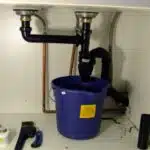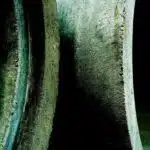As a plumbing expert, I have encountered numerous homeowners who experience drain clogs in their homes. Clogged drains can cause inconvenience and discomfort to the residents, and if not addressed promptly, they can lead to significant damage to the home’s plumbing system. While some people opt for chemical drain cleaners or seek professional help, there are several techniques that anyone can use to unclog any drain without spending a lot of money or time.
In this article, I will share my expertise on how to unclog any drain effectively. Whether it’s the kitchen sink or bathroom shower, these tips will help you get rid of any clog so that your plumbing system runs smoothly again. By following these simple steps, you can save yourself from the frustration of dealing with a clogged drain and avoid costly repairs down the road. So let’s get started on learning how to unclog any drain like a pro!
Understanding The Causes Of Drain Clogs
Understanding the Causes of Drain Clogs is of utmost Importance in our daily lives. Blocked drains can be a source of great inconvenience and pose health hazards if not dealt with properly. To prevent such occurrences, it is necessary to identify the causes of drain clogs and adopt Prevention Techniques. A blocked drain is often caused by a build-up of waste materials that have accumulated over time, leading to a partial or complete obstruction of the drainage system.
One common cause of drain clogs is the disposal of non-biodegradable items such as plastics, sanitary pads, and wipes down the drain. These items do not decompose easily and tend to accumulate inside pipes, reducing their diameter until they finally block water flow completely. Another major culprit is grease from cooking oils and fats which coagulate inside pipes causing a reduction in water flow. Furthermore, hair strands may also accumulate inside piping systems causing blockage.
Prevention Techniques for drain clogs include avoiding the disposal of non-biodegradable materials down the drain, ensuring that food particles are not dumped into sink drains and regularly cleaning out sink traps to remove hair strands and other debris. With these prevention techniques in mind, one can avoid the inconvenience caused by blocked drains and maintain proper hygiene levels in living spaces. Understanding these causes helps us take safety precautions before starting any unclogging process.
Taking Safety Precautions Before Starting
Before starting any drain cleaning procedure, it is essential to prioritize your safety by taking the necessary precautions. This will ensure that you don’t put yourself or others in harm’s way. One of the most important things to do is to ensure proper ventilation in the area where you will be working. This will help to prevent inhaling toxic gases that may be present in the drain or sewer lines.
Another critical safety measure is to wear protective gear when cleaning your drains. This includes gloves, eye protection, and a face mask. Gloves will protect your skin from coming into contact with harmful chemicals or bacteria found in clogs, while eye protection and a face mask will prevent splashes from entering your eyes or mouth. Protective gear also helps to guard against slips and falls on wet surfaces.
To further enhance safety measures, it is crucial to keep children and pets away from the area where you are working. You should also ensure there is adequate lighting around the work area for better visibility. Finally, make sure all tools are within reach before starting any drain cleaning procedure to avoid accidents that could occur when reaching for equipment.
In summary, taking safety precautions before starting any drain cleaning procedure is paramount. The importance of ventilation cannot be overstated as it prevents inhalation of toxic gases that may be present in sewer lines or drains. Additionally, wearing protective gear such as gloves, eye protection, and a face mask can significantly reduce exposure to harmful chemicals or bacteria found in clogs while preventing slips and falls on wet surfaces. With these measures in place and tools at hand, one can proceed safely with confidence towards unclogging their drain using a plunger next.
Using A Plunger
As if the plumbing gods have a twisted sense of humor, clogged drains always seem to happen at the most inconvenient times. But fear not, for there are ways to combat this pesky problem. One of the most common and effective methods is using a plunger.
Proper technique is key when using a plunger. First, ensure that there is enough water in the sink or tub to cover the bottom of the plunger cup. Next, place the plunger over the drain and press down firmly to create a seal. Once you have formed a tight seal, push and pull on the plunger in quick motions without breaking suction. Repeat this method until water begins to flow freely down the drain.
Common mistakes people make when plunging include not creating a tight seal with the plunger or using too much force which can cause damage to pipes. It’s important to remember that different types of plungers exist for different types of drains; cup plungers are best used for sinks and tubs while flange plungers work better on toilets.
Next up: pouring boiling water down your drain as another method for unclogging stubborn blockages.
Pouring Boiling Water
Boiling water is a simple yet effective solution for unclogging drains. This method offers numerous benefits that make it an attractive option for homeowners. For starters, boiling water is readily available and inexpensive compared to other drain cleaning methods. It’s also easy to use and doesn’t require any special tools or equipment.
However, when using boiling water to unclog drains, it’s important to take certain precautions. First, ensure that the drain is made of materials that can withstand high temperatures without cracking or melting. If you’re unsure about the material, consult with a plumbing professional before proceeding. Additionally, avoid pouring boiling water down a toilet as this can damage the porcelain bowl or cause it to crack.
To safely use boiling water for unclogging drains, first boil a pot of water on the stove until it reaches a rolling boil. Carefully pour the hot water down the drain in small increments, waiting a few seconds between each pour to allow the water to work its way through the clog. Repeat this process until you’ve poured all of the boiling water down the drain.
Next up is making a homemade drain cleaner using natural ingredients commonly found around your home.
Making A Homemade Drain Cleaner
- In order to make a homemade drain cleaner, the necessary ingredients must be gathered.
- The ingredients typically consist of baking soda, white vinegar, and hot water.
- Once these ingredients are assembled, a solution can be prepared by combining the ingredients in a bowl.
- After the solution is thoroughly mixed, it can be poured carefully down the drain.
- It is important to pour the solution slowly and steadily in order to ensure that it reaches the clog.
- Finally, the solution should be left to sit for approximately 30 minutes before running water through the drain.
Gather Ingredients
When it comes to unclogging drains, one of the most effective solutions is making a homemade drain cleaner. This solution can be made using ingredients commonly found in households. However, it is essential to gather the appropriate ingredients and use proper measurements for optimal results.
Ingredient options for a homemade drain cleaner vary depending on the type of clog and the severity of the blockage. Some popular options include baking soda, vinegar, salt, lemon juice, and hot water. Each ingredient has its unique properties that help break down different types of clogs, making them an excellent choice for DIY cleaners. It is crucial to choose the right combination of ingredients based on the type of drain and severity of the clog.
Proper measurement plays an integral role in making a successful homemade drain cleaner. Using too little or too much of any ingredient can affect its effectiveness negatively. For instance, using too much baking soda may result in residue buildup in pipes while using too little vinegar might not produce enough fizzing action needed to break down clogs effectively. Therefore, it is essential to follow recommended measurements carefully when making a DIY drain cleaner for optimal results.
Prepare Solution
Once the appropriate ingredients have been gathered, the next step in making a homemade drain cleaner is to prepare the solution. Mixing instructions are crucial to ensure that the cleaner is effective in breaking down the clog and clearing the drain. It is essential to follow these instructions carefully, as using too little or too much of any ingredient may affect its effectiveness negatively.
To prepare a basic homemade drain cleaner, start by pouring half a cup of baking soda down the clogged drain. Next, add half a cup of vinegar and immediately cover the drain with a plug or cloth to prevent the mixture from escaping. The fizzing action created by combining baking soda and vinegar helps to break down and dissolve grease, hair, soap scum, or other materials causing blockages in drains.
After allowing the mixture to sit for 30 minutes, flush it out with hot water. Hot water helps to flush away any remaining residue that could cause future clogs. This simple yet effective recipe makes an excellent DIY drain cleaner that can be used on most blocked drains. However, for more severe blockages or specific types of drains such as toilets or garbage disposals, it is best to seek professional help from a licensed plumber.
Pour Down Drain
When it comes to making a homemade drain cleaner, preventive measures are crucial. Regularly cleaning and maintaining your drains can help prevent clogs from occurring in the first place. However, if you do encounter a blockage, there are environmentally-friendly options that can be made from everyday household items.
One effective method is to pour down the drain a mixture of baking soda and vinegar. This combination causes a chemical reaction that breaks down blockages and helps clear the drain. It is important to note that while this method is eco-friendly, it may not work on all types of clogs or drain systems.
To use this method, simply pour half a cup of baking soda down the clogged drain followed by half a cup of vinegar. Cover the drain immediately to prevent any mixture from escaping and allow it to sit for 30 minutes before flushing with hot water. This simple yet effective recipe makes an excellent DIY drain cleaner that can save you money while also reducing your environmental impact.
Using A Plumbing Snake
When it comes to unclogging stubborn drains, using a plumbing snake can be an effective solution. A plumbing snake is a tool that is designed to break up and remove blockages from within the drainpipe. There are two types of plumbing snakes: handheld and electric. Handheld snakes require manual operation and are suitable for small clogs. Electric snakes, on the other hand, are more powerful and can be used for larger blockages.
Before using a plumbing snake, it’s important to take safety precautions such as wearing gloves and eye protection. To begin, insert the head of the snake into the drain opening and turn the handle clockwise until you feel resistance. This indicates that you’ve reached the blockage. Next, apply gentle pressure and use a back-and-forth motion to break up the clog. Once you’ve cleared the blockage, slowly retract the snake while continuing to rotate the handle.
Proper technique for using a plumbing snake can vary depending on the type of snake being used and where the blockage is located. It’s important to follow manufacturer instructions carefully to avoid damaging your pipes or causing injury. If you’re not comfortable using a plumbing snake or if your attempts at unclogging your drain have been unsuccessful, it may be time to call in a professional plumber for assistance.
Transitioning into trying a wet-dry vacuum: Another option for unclogging drains is by using a wet-dry vacuum. This method involves creating a seal over the drain opening with duct tape and then using suction power from the vacuum to pull out any blockages in the pipe. However, it’s important to note that this method may not work for all types of clogs and could potentially damage older pipes or fixtures if not done properly.
Trying A Wet-Dry Vacuum
- A wet-dry vacuum is a versatile tool that can be used for many different tasks, including unclogging drains.
- To use a wet-dry vacuum for unclogging drains, it must first be filled with water and attached to the clogged drain.
- After the vacuum is attached, the suction should be turned on and left running for several minutes to loosen the clog.
- After the clog is loosened, it can be cleared out by removing the vacuum and running hot water through the drain.
Using A Wet-Dry Vacuum
When it comes to unclogging drains, using a wet-dry vacuum is a viable option that many professional plumbers use. The process involves attaching the vacuum hose to the drain and turning on the suction power. However, it’s essential to follow some troubleshooting tips and best practices for effective suction.
Firstly, ensure that the vacuum hose is securely attached to the drain. Loose attachments can result in reduced suction power or even damage the vacuum itself. Secondly, adjust the nozzle of the vacuum to create an air-tight seal around the drain opening. This will help maximize suction power and prevent any air leaks that could reduce effectiveness. Lastly, remove any standing water from around the drain before using the wet-dry vacuum. Standing water can interfere with proper suction and cause blockages within the machine.
By following these best practices, you can increase your chances of effectively unclogging your drain using a wet-dry vacuum. Remember to always take safety precautions when handling any plumbing equipment and seek professional help if necessary. With patience and persistence, you can successfully clear most clogs without damaging your plumbing system.
In conclusion, using a wet-dry vacuum is an efficient method for unclogging drains if done correctly. By adhering to troubleshooting tips and following best practices for effective suction, you can successfully clear most clogs without causing further damage. If in doubt or faced with a difficult clog, it’s always advisable to seek help from a professional plumber who has experience dealing with stubborn blockages.
Cleaning A Clogged Drain With A Wet-Dry Vacuum
Wet-dry vacuums are versatile tools that offer several benefits for unclogging drains. They are powerful, efficient, and effective at removing debris and blockages from pipes. Wet-dry vacuums can handle both wet and dry materials, making them ideal for clearing clogs caused by hair, soap scum, grease, or food particles. They also come with a range of attachments that allow you to reach difficult areas and clean hard-to-reach spots.
However, using a wet-dry vacuum is not without its challenges. To maintain optimal performance, it’s essential to follow some basic tips for maintaining your machine. Firstly, ensure that the filter is clean and free of debris before each use. A dirty filter can reduce suction power and cause clogs within the machine itself. Secondly, check the hose regularly for any signs of wear or damage. A damaged hose can result in reduced suction power or even cause leaks within the machine.
When it comes to cleaning a clogged drain with a wet-dry vacuum, there are several best practices to follow for optimal results. Firstly, remove any standing water from around the drain before inserting the vacuum hose. This will help prevent water from entering the machine and causing damage. Secondly, adjust the nozzle of the vacuum to create an air-tight seal around the drain opening. This will maximize suction power and prevent any air leaks that could reduce effectiveness. Lastly, run hot water through the drain after using the wet-dry vacuum to help flush out any remaining debris or residue.
In summary, using a wet-dry vacuum is an effective method for cleaning clogged drains if done correctly. By following some basic tips for maintaining your machine and adhering to best practices for cleaning drains, you can successfully clear most clogs without causing further damage. Remember always to take safety precautions when handling plumbing equipment and seek professional help if necessary for stubborn blockages that require advanced solutions.
Using Baking Soda And Vinegar
Baking soda and vinegar is a popular method to unclog drains, especially when dealing with minor blockages. This method involves mixing the two ingredients together to create a reaction that helps dissolve organic material in the drain. The mixing ratios for this solution vary, but experts suggest using one cup of baking soda followed by one cup of vinegar.
While this method may seem like an easy fix, it’s important to note its limitations. Baking soda and vinegar are not as effective for severe clogs caused by foreign objects or hardened materials. Additionally, using too much of either ingredient can lead to damage to your pipes over time.
Despite its limitations, this method has proven to be effective for minor blockages and can be used as a preventative measure for maintaining clean drains. It’s also an eco-friendly option compared to harsh chemical cleaners that can harm the environment and your plumbing system. In the next section, we will explore another common method for unclogging drains: removing the drain stopper.
Removing The Drain Stopper
Like a detective, we must explore every possible lead when it comes to unclogging a drain. One of the most common culprits is a blocked stopper. Removing the drain stopper is an important step in any clog-clearing process.
Before diving into removing the stopper, it’s important to note that there are several types of stoppers out there. Some are detachable, while others are not. If your stopper is detachable, simply unscrew or lift it off and set it aside. If your stopper is not detachable, don’t worry! There are alternative methods to remove the blockage.
One option for removing a non-detachable stopper is using a plunger or a wire hanger to push the blockage through. Another option is to use an auger or drain snake – this tool will help break up and remove any debris that may be causing the clog. Remember, each type of stopper requires a slightly different approach for removal, so be sure to do your research before proceeding with any method. Now that we’ve explored removing the drain stopper alternatives, our next step will be checking the garbage disposal for any potential issues.
Checking The Garbage Disposal
When dealing with clogged drains, it is important to check the garbage disposal. This is a common culprit for kitchen sink backups. To properly check the garbage disposal, turn off the power source and use a flashlight to inspect the blades. If there are any visible objects or debris, remove them with tongs or pliers.
Cleaning methods for the garbage disposal can help prevent future clogs. One effective method is to pour a mixture of ice cubes and rock salt into the disposal while running cold water. This will help break up any buildup on the blades. Another option is to grind citrus peels in the disposal to freshen it up and eliminate odors.
Maintenance tips for the garbage disposal include avoiding putting certain items down the drain, such as grease, fibrous vegetables, and non-food items like paper towels or plastic. Running cold water while using the disposal can also help prevent buildup and keep it running smoothly. Regularly cleaning and maintaining your garbage disposal can save you from future headaches when dealing with clogged drains.
Transitioning into clearing the p-trap section, another potential cause of clogged drains can be found further down in the plumbing system. In some cases, buildup or objects may become trapped in the p-trap, which is located beneath sinks and toilets. It is important to know how to clear this section if other methods have not worked in unclogging your drain.
Clearing The P-Trap
To ensure that your drain is completely unclogged, it is important to try out different cleaning methods. If checking the garbage disposal did not clear the drain, then clearing the P-trap is the next step. The P-trap is a curved section of pipe located beneath your sink that traps debris and prevents it from entering your plumbing system.
To clear the P-trap, you will need to gather some tools and remove the section of pipe. Start by placing a bucket beneath the trap to catch any water that may spill out during the process. Then use a wrench or pliers to loosen the nuts that connect the P-trap to both the sink drain and waste line. Once you have removed the trap, clean it thoroughly with a brush or cloth before reassembling it.
P-trap maintenance is essential for keeping your plumbing system in good condition. By cleaning it regularly, you can avoid future clogs and prevent unpleasant odours from entering your home. Remember to take caution when attempting any DIY plumbing projects and seek professional help if needed.
Seeking Professional Help
When to consider seeking professional help:
Unclogging a drain can sometimes be a frustrating task that requires specialized knowledge and equipment. If you have tried all the DIY methods without success, it may be time to consider seeking professional help. There are several instances when calling in a plumber would be the best solution.
Pros and cons of seeking professional help:
There are both advantages and disadvantages to calling in a professional plumber. On one hand, they have the expertise, tools, and experience to quickly identify and fix the problem. They can also provide valuable advice on how to prevent future clogs. However, hiring a plumber can be expensive and may not always fit into your budget. Additionally, scheduling an appointment may take some time, which could be an issue if you need immediate assistance.
In conclusion, while it is possible to unclog most drains using DIY methods, there are times when it’s best to seek professional help. Weighing the pros and cons of hiring a plumber will depend on your specific situation and budget constraints. If you do decide to call in a professional, be sure to choose someone who is licensed and insured for your protection. In the next section, we will discuss preventative measures you can take to avoid future drain clogs.
Preventing Future Drain Clogs
Proper disposal practices are essential for preventing future drain clogs. It is important to avoid pouring grease, oil, or fat down the drain as they tend to solidify and cause blockages. Instead, it is recommended to pour them into a container and dispose of them in the trash. Food scraps should also be disposed of properly by throwing them in the garbage or composting them.
Additionally, there are several common household items that can cause drain clogs if not disposed of properly. Cotton balls, paper towels, feminine hygiene products, and baby wipes should never be flushed down the toilet as they do not dissolve easily and can accumulate in pipes causing blockages. It is also important to avoid rinsing hair down the drain as it can contribute to build-up over time.
To prevent future drain clogs, it is crucial to practice proper disposal habits and avoid flushing any non-degradable items down the toilet or sink. Consistently disposing of waste correctly will help maintain a healthy plumbing system and prevent costly repairs.
Transition: Now that you know how to prevent future drain clogs through proper disposal practices, let’s move on to discussing how you can maintain your plumbing system for optimal performance.
Maintaining Your Plumbing System
To ensure your plumbing system functions well, it is crucial to undertake regular maintenance. This entails inspecting the pipes, faucets, and fixtures for leaks or damage. It is also important to clean the drains periodically using non-corrosive chemicals or a mixture of vinegar and baking soda. Regular maintenance will enable you to identify problems early on, thereby preventing costly repairs.
When it comes to maintaining your plumbing system, hiring a plumber may be necessary for more complex tasks such as installing new pipes or fixtures. Plumbers have the necessary expertise and equipment to diagnose and fix any issues you may encounter. They can also provide guidance on how to properly care for your plumbing system to prevent future problems.
In summary, regular maintenance is key in ensuring that your plumbing system operates efficiently. Hiring a plumber can also prove beneficial in tackling more complicated issues. By taking these steps, you can avoid unexpected expenses related to plumbing repairs and enjoy the many benefits of a healthy plumbing system such as improved water pressure and quality. In the subsequent section, we will discuss common issues that arise in most households and how best to troubleshoot them effectively.
Troubleshooting Common Issues
When dealing with clogged drains, homeowners may encounter common issues that can be easily resolved. One of the most prevalent issues is a slow drain. This problem often occurs when there is a buildup of hair, soap scum, or grease in the pipes. To address this issue, homeowners can use DIY tools such as a plunger or drain snake to remove the blockage.
Another common issue is a foul odor emanating from the drain. This can occur due to organic matter such as food particles or hair trapped in the pipes. One effective solution to this problem is pouring a mixture of baking soda and vinegar down the drain followed by hot water. Alternatively, homeowners can use commercial cleaners specifically designed for unclogging drains.
However, there may come a time when DIY methods fail to resolve the issue at hand. In such cases, it may be necessary to hire professionals who possess specialized equipment and expertise to diagnose and fix the problem. Professionals can also provide advice on how to prevent future clogs and ensure that plumbing systems function optimally.
- Regularly clean out debris from sink strainers and shower drains
- Avoid pouring grease down the kitchen sink
- Use screens over bathtub and shower drains to prevent hair buildup
- Schedule regular plumbing maintenance with professionals
Remember that taking preventative measures can help homeowners avoid costly repairs in the future. However, if problems persist or become too difficult to deal with using DIY tools, it may be best to contact experienced professionals who have access to advanced equipment and techniques for unclogging any drain effectively.
Conclusion
Understanding the causes of drain clogs is crucial to effectively unclogging any type of drain. Safety precautions should always be taken before attempting any DIY methods, such as using a plunger or pouring boiling water. It’s important to note that not all clogs can be resolved with these methods, and seeking professional help may be necessary.
To prevent future drain clogs, regularly maintaining your plumbing system is key. This includes cleaning out debris from drains and ensuring proper disposal of waste. Troubleshooting common issues, such as slow draining sinks and toilets, can also prevent larger problems from occurring.
Remember, while some clogs may be easily resolved with DIY methods, it’s important to know when to seek professional help. Maintaining your plumbing system and being aware of potential causes for clogs can save you both time and money in the long run. As a plumbing expert, I advise taking preventative measures to ensure the longevity and efficiency of your plumbing system.
Image Credits
- “Handle for 3D print nozzle unclogging needle (and hole gauge)” by Creative Tools (featured)

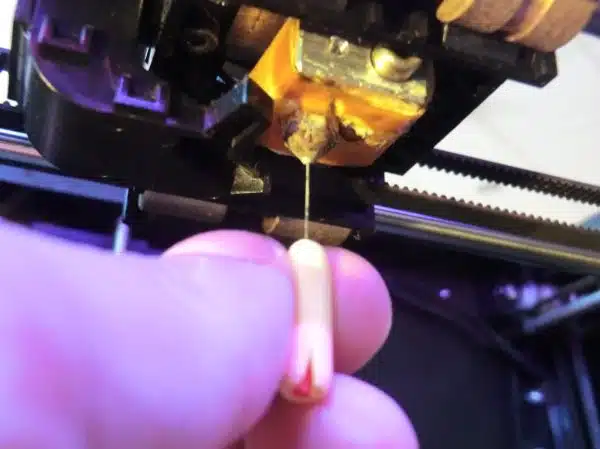
![How To Get Hair Out Of A Bathtub Drain 2 2/365 [Bathtub Drain]](https://green-life.blog/wp-content/uploads/2023/05/cOEu5edpkejq-150x150.jpg.webp)

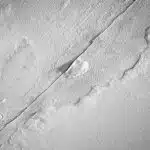
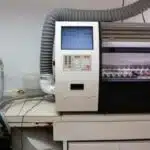


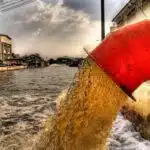
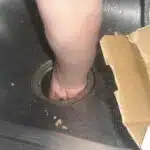
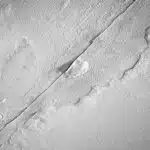
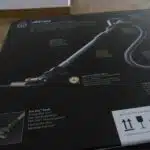

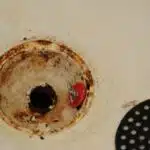

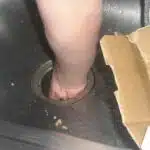
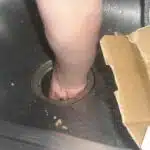
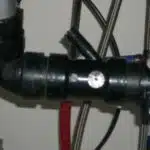

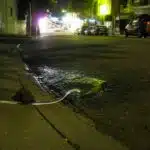

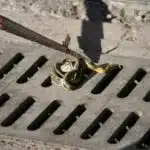


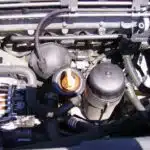
![How To Replace A Bathtub Drain In A Mobile Home 25 2/365 [Bathtub Drain]](https://green-life.blog/wp-content/uploads/2023/05/3ft8KAJsNnjq-150x150.jpg.webp)


